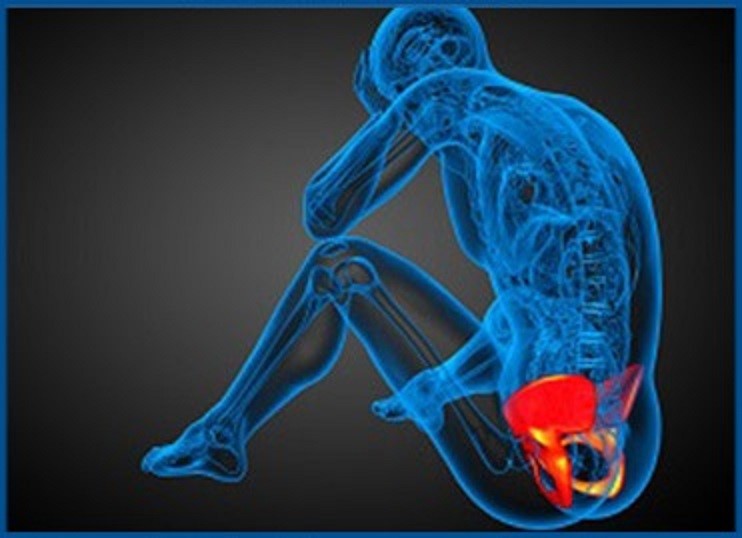Shock wave therapy and its effect on pelvic floor pains and spasms
- Type: Free
Shock wave therapy is also known as shock wave treatment. It was first introduced as a clinical practice in 1982 to manage urological conditions. The success of this approach for treating kidney stones quickly made it an appropriate, non-invasive, and effective treatment. Subsequently, ESWT (Extracorporeal shock wave therapy) was also studied in orthopedics and was found to be able to provide conditions for muscle relaxation. Today, shock wave therapy is used to treat many muscle disorders, including pelvic floor pain and spasm.

What is the physiology of shock wave therapy (ESWT)?
Shock waves are sound waves with unique physical properties such as nonlinearity, a high peak pressure followed by low tensile amplitude, a quick-rising time, and a short duration (10 ms). They feature a single pulse, a broad frequency range (0-20 MHz), and a large amplitude of pressure (0-120 MPa).
These features cause a shock wave to have both positive and negative phases. The positive phase creates direct mechanical forces, while the negative phase causes cavitation and gas bubbles to form, which then collapse at high speeds, causing a second wave of shock waves.
The peak pressure of a shock wave is roughly 1000 times larger than the peak pressure of an ultrasonic wave.
Mechanism of Shock wave therapy
The long-term consequences of ESWT therapy remain unclear. Promote neovascularization at the tendon-bone junction, stimulate tenocyte proliferation and osteoprogenitor differentiation, increase leukocyte infiltration, and amplify growth factor and protein synthesis to stimulate collagen synthesis and tissue remodeling are some of the proposed mechanisms of action for ESWT.
Principles of Shock Wave Therapy
Shock waves are short-lived pressure disturbances that travel quickly across three-dimensional space. They are connected with a rapid increase in pressure from ambient to maximum. Cavitation, which occurs as a result of the wave propagating in the negative phase, is a significant tissue impact. Hematoma development and focused cell death are caused by direct shock wave and indirect cavitation effects, which encourage new bone or tissue creation.
Shock wave Therapy Indications
Shock wave therapy is most often used to treat common musculoskeletal problems. These are some of them:
- Upper and lower limb tendinopathy
- Large trochanteric pain syndrome
- Medial tibial stress syndrome
- Patellar tendinopathy
- Plantar fasciopathy
- Frozen shoulder (Adhesive capsulitis)
- Non-union of long bone fractures
- Avascular necrosis of the femoral head
- Knee arthritis
In physiotherapy, there are certain contraindications to using ESWT
- Pregnancy
- Over the major blood vessels and nerves
- implanted devices such as a pacemaker
- Open wounds
- Joint replacements
- Epiphysis (the rounded end of a bone)
- Blood clotting problems such as thrombosis
- Infections
- Cancerous tissues
- When the patient is unable to cooperate
ESWT vs. Therapeutic Ultrasound: What Are the Differences?
- High-frequency sound waves are used in therapeutic ultrasound, while lower-frequency sound waves are used in ESWT
- Ultrasound can cause both thermal and non-thermal effects in tissues. However, ESWT does not cause heating
ESWT vs. Therapeutic Ultrasound: What Are the Similarities?
- Acoustic waves are used in Therapeutic Ultrasound and ESWT to provide therapeutic advantages
- To transport sound waves to the tissues being treated, they both utilize a coupling medium
- Both of these treatments are non-invasive
Pelvic floor pain is more common in women than men and occurs for a variety of reasons. Surgery for this type of pain has many problems. This is why most people who suffer from it prefer to try palliative care. Shock wave therapy is one of the recommended treatments for these pains and spasms. Shock wave therapy is a controlled wave of mechanical energy to improve a patient's musculoskeletal mobility and provide drug-free pain relief.
Pelvic (floor) pain is often caused by sciatica or necrosis of the vessels in the pelvis. Of course, sometimes this pain occurs due to a dangerous disease, in which case it needs immediate follow-up.
Pelvic Floor Pain Treatment with Shock Wave Therapy
Trigger points are hyperirritable locations in a taut band of skeletal muscle that are distinct, focused, and hyperirritable. They cause localized and referred pain, and they frequently accompany chronic musculoskeletal problems. These locations are identified and treated in shock wave therapy. The loosening of these nodules relieves spasms and aches in the body's muscles. As a result, the patient's mobility is improved. It's worth noting that the patient's sore areas are frequently located far from the trigger point.
The effect of shock wave therapy on the treatment of pelvic floor pain
The effect of shock wave therapy on the treatment of pelvic floor pain
During a study, the effect of shock wave therapy on the treatment of pelvic floor pain was investigated. For this study, sixty patients with CPPS (chronic pelvic pain syndrome) were studied for at least three months in two groups. Both groups were treated four times (once a week) with 3,000 pulses each.
In this study, low-energy ESWT was used in the perianal region without anesthesia. The control group was deprived of this type of therapy (the probe had been turned off).
Finally, the effects of ESWT on pain, quality of life, erectile function, and urination were evaluated. All patients underwent outpatient and follow-up treatments without any problems. All 30 patients in the study group achieved statistically significant improvement in pain, quality of life, and urinary after ESWT, compared to the placebo group (control group).
ESWT is used at any time due to its easy and cheap application, no side effects, and no necessary repetition for the therapy. In addition, this type of treatment has reduced the major pain in many patients.
 Tecar
Tecar Shock Wave
Shock Wave Plasma
Plasma Laser
Laser Tesla
Tesla Nikola
Nikola Kayser
Kayser Fusion
Fusion





